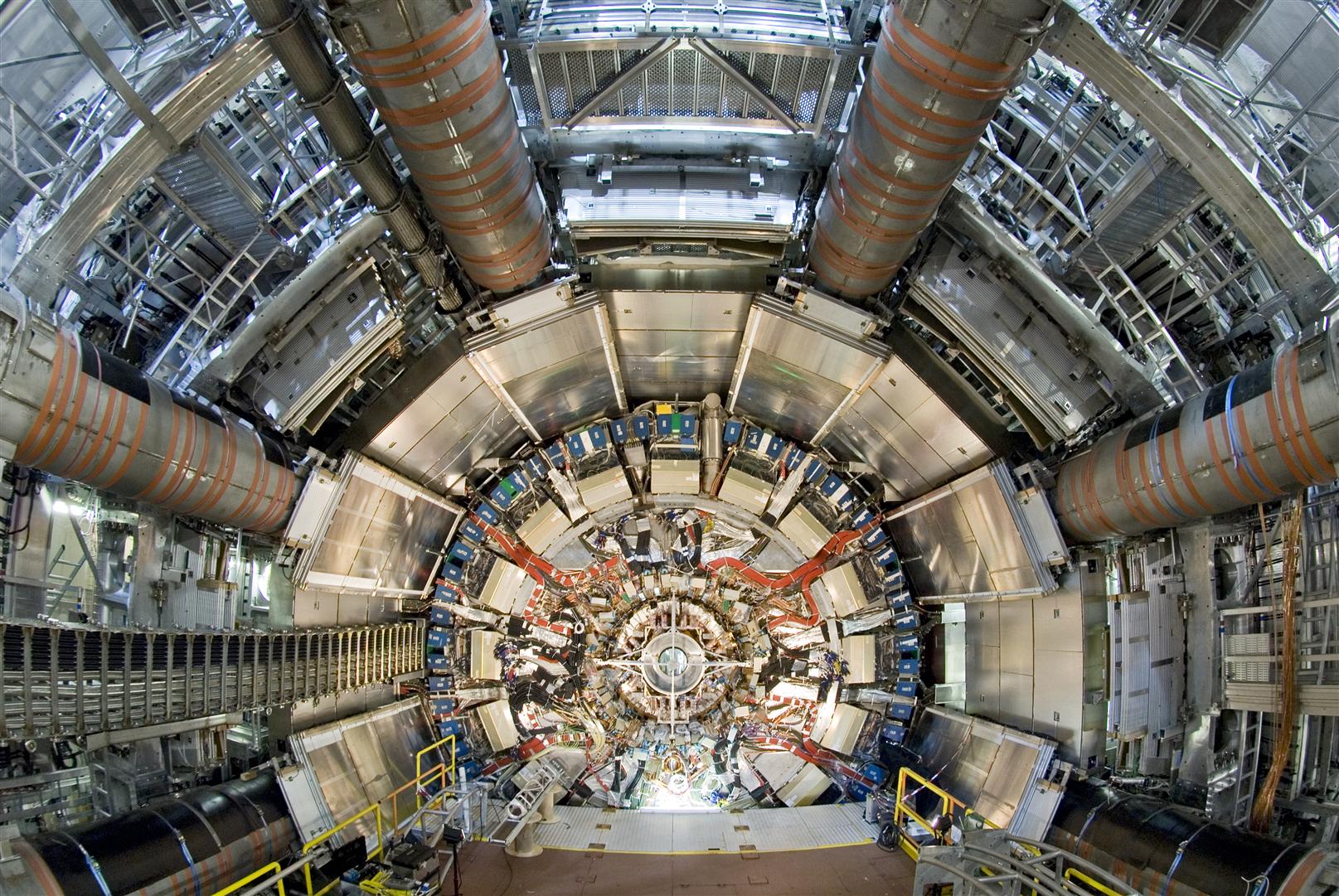Atom Smasher Will Renew Hunt for Strange Particles in 2015

In 2015, the world's most powerful atom smasher, the Large Hadron Collider, will restart. The particle accelerator has already discovered the Higgs boson, the so-called "God particle," and when it comes back online after two years spent on upgrades, researchers suggest it could discover other kinds of these God particles, as well as extra dimensions of reality and the identity of the mysterious dark matter that makes up most of the mass in the universe.
The Large Hadron Collider (LHC) is the largest particle collider in the world, with a ring about 16 miles (27 kilometers) in circumference. It accelerates particles to nearly the speed of light using close to 9,600 magnets, comprised of about 10,000 tons of iron, more than in the Eiffel Tower. These magnets are made up of coils of filaments that, if they were unraveled, would stretch to the sun and back five times with enough left over for a few trips to the moon.
The largest of the LHC's magnets weigh 35 tons, and are about 50 feet (15 meters) long. They can generate a magnetic field more than 100,000 times more powerful than Earth's. These magnets require cooling from liquid helium, making the LHC the largest refrigerator in the world — the magnets operate at temperatures of minus 456.3 degrees Fahrenheit (minus 271.3 degrees Celsius), colder than outer space.
In 2012, the atom smasher helped scientists discover the long-sought Higgs boson, which helps grant mass to all particles that have mass, such as protons and electrons. The Higgs boson itself has a mass of 125 billion electron-volts, or more than 130 times the mass of the proton.
Still, as rich as the harvest of results surrounding the Higgs was, the LHC was designed to be even more powerful than it has yet been. Just nine days after it first went live in 2008, a faulty electrical connection between two of its magnets led to several tons of helium escaping with explosive force, damaging dozens of magnets. [Wacky Physics: The Coolest Little Particles in Nature]
Now, the LHC is set to return in 2015 nearly twice as powerful as its first run from 2010 to 2013.
"Doubling the energy will have a huge impact on the search for new particles at LHC," said experimental particle physicist Gabriella Sciolla, of Brandeis University in Waltham, Massachusetts, who works on the ATLAS experiment at the LHC. "The higher the energy, the heavier the particle one can possibly produce."
Get the world’s most fascinating discoveries delivered straight to your inbox.
One breakthrough the LHC could make after it restarts is discovering what particles make up dark matter, one of the greatest mysteries in the universe. Dark matter is thought to be an invisible, enigmatic substance that makes up about five-sixths of all matter in the cosmos.
"By going to larger energies at the LHC, we increase the range of masses of potential dark matter particles that we can examine," said experimental particle physicist Andrew Lankford at the University of California, Irvine, who also works on the ATLAS experiment.
The consensus among physicists so far is that dark matter is made up of new kinds of particles that interact only very weakly with ordinary matter. Dark matter cannot be explained by any of the particles in the Standard Model of particle physics, the best description there currently is of the subatomic world. They must therefore arise from a new understanding of physics that goes beyond the Standard Model. One possibility lies in an idea known as supersymmetry, which suggests all known kinds of particles in the Standard Model have as-yet-undiscovered partners. For example, electrons would have similar cousins known as selectrons.
"All searches for supersymmetric particles depend on high-energy collisions between particles," Sciolla said.
Scientists say that the LHC cannot directly detect any dark matter particles. However, after the LHC smashes protons together, any energy missing from the aftermath might hint at the creation and existence of dark matter particles, Sciolla explained.
Another discovery the LHC could make are more kinds of Higgs bosons. "The LHC proved one kind of Higgs boson exist — no one says there can't be a second or third or fourth," Sciolla said. "They could be more Higgs bosons with different masses, and maybe even charge, as is predicted by supersymmetry."
Learning more about how Higgs bosons interact with other particles could also illuminate the nature of dark matter. "There could be very, very rare interactions between Higgs and dark matter particles that could shed light on what dark matter is," Lankford said. "Higgs could be a portal into the dark sector."
And last, the LHC may discover the so-called Z-prime or Z' boson. This particle is theoretically a heavier version of the Z boson, a particle linked with the weak nuclear force that underlies both nuclear fusion and radioactive decay.
Nearly any grand unified theory — a theory in physics that could explain all known forces — would suggest that Z-prime exists. This includes theories that also suggest the existence of extra dimensions of reality beyond the three spatial dimensions of length, width and depth and the fourth dimension of time.
"Z-prime is much heavier than a Z particle, something like tens of times the mass," Sciolla said. "Z-prime can decay in a very simple way that yields two very energetic muons, which are basically heavier versions of electrons. If we can detect the muon signature of Z-prime, that would support models that predict the existence of Z-prime."
With all this in mind, researchers at the LHC are greatly looking forward to 2015.
"As the LHC is waking up, a lot of people are excited right now," Sciolla said. "There's a lot of enthusiasm here."
Follow Live Science @livescience, Facebook & Google+. Originally published on Live Science.



